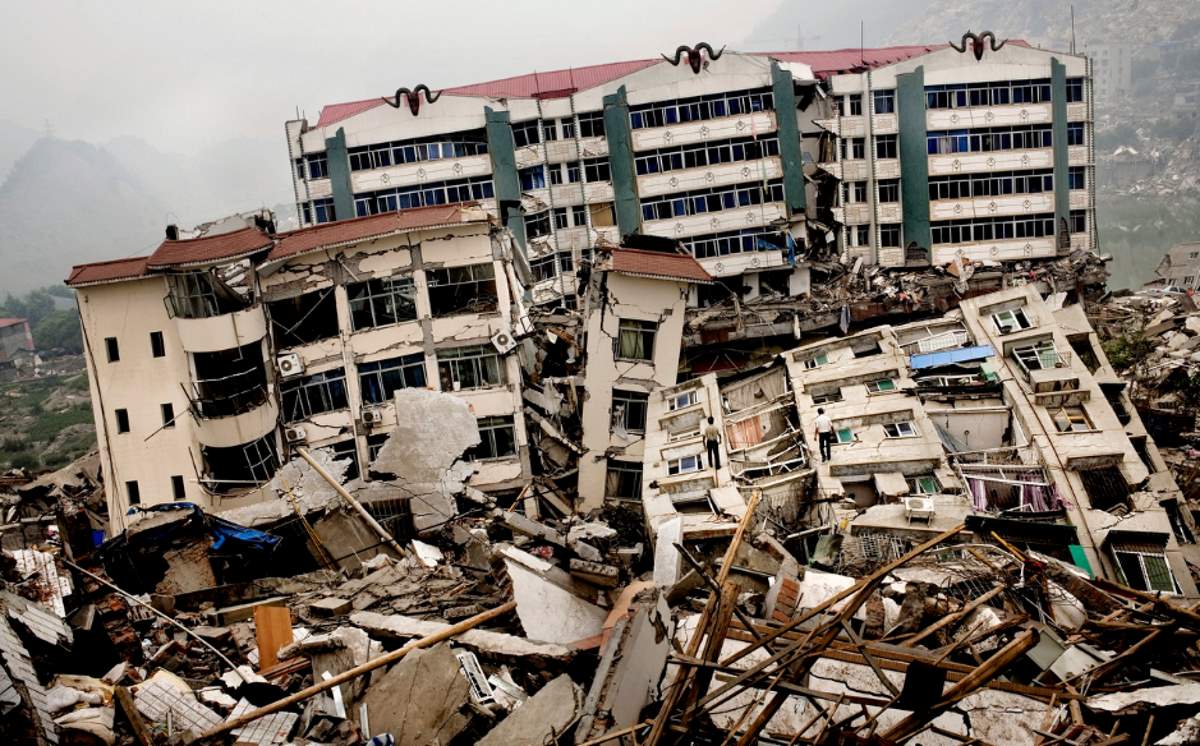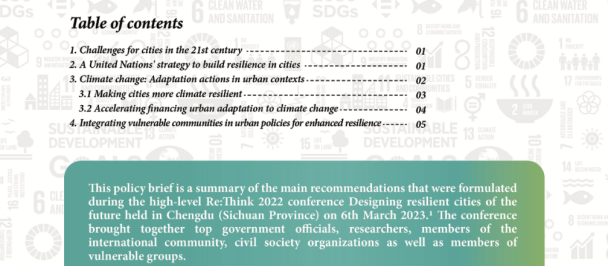--- Collapsed buildings --- On 12 May 2008, a massive earthquake hit southwest China, and was named after its epicenter - Wenchuan.
May 12, Chengdu – Marking the 10th anniversary of the earthquake that devastated the city of Wenchuan, China, the United Nations Development Programme (UNDP) Risk and Resilience Innovation Project held an opening ceremony today for the newly built Chengdu Disaster Preparedness Learning Center. The Center aims to raise awareness in disaster risk reduction and prevention as well as enhance the capacity to respond to disasters, targeted mainly to youth but also the general public.
On 12 May 2008, a massive earthquake with a magnitude of 8.0 on the Richter Scale hit southwest China, and was named after its epicenter - Wenchuan. Official statistics shows that the Wenchuan earthquake claimed 69,226 lives, injured over 374,643 and with 17,922 missing. More than 45 million people in 10 provinces and municipalities were affected, with many evacuated from their homes needing to live in temporary shelters. The disaster also caused the loss of nearly 2 million jobs, more than half of them in the agricultural sector. 30 million people in rural communities lost most of their assets. A total of 6.5 million homes were destroyed, with economic losses estimated at nearly US$ 200 billion by Chinese government. Nearly five years after Wenchuan, a second earthquake hit the province, with its epicenter in Lushan country.
In response to the devastating Wenchuan Earthquake, UNDP immediately mobilized and delivered a large amount of relief assistance to affected areas as part of an overarching UN joint efforts. UNDP Post-Wenchuan Earthquake Early Recovery & Disaster Risk Management Programme in China was designed and implemented to meet the pressing recovery needs of poor communities via integrating several areas of work in 19 pilot poor villages, later increased to 27, in line with Government plans.
The programme applied international best practices and experiences in respective to the local context, such as community-based disaster preparedness and risk reduction approaches, a social gender perspective model, and a Participatory Vulnerability Analysis (PVA) from planning and coordinating to implementing and monitoring, and included multi-sectoral partners as well as affected villagers in Wenchuan, China.
Aware of the critical role of risk and resilience in development, UNDP and China have conducted disaster management-related projects, such as Sharing and Learning on Community Based Disaster Management Asia, Disaster Risk Reduction and Climate Change Adaptation in Central Asia, and Risk & Resilience Innovation, responding to the need of poor and vulnerable communities by integrating livelihood assistance, disaster risk reduction, sharing knowledge and practice, technical support, capacity building, and policy advocacy.
Today, the establishment of the risk and resilience innovation project Chengdu base, namely the Chengdu Disaster Preparedness Learning Center, reinforced the commitment to knowledge sharing and disaster risk reduction practices. As noted by Devanand Ramiah, Deputy Country Director of UNDP China, “While the Center will serve as a reminder of the past and a conduit for sharing achievements in building back better, it also will also focus on disaster risk reduction training, education, R&D, and promotion of best practices.”
The past achievements and the new Center are in line with the post-2015 Sendai Framework, which focuses on disaster risk reduction, especially on the community engagement in disaster management to reduce the impact of disasters. And these objectives are reaffirmed by Sustainable Development Goals through its stronger focus on resilience-building and risk reduction measures. Ten of the seventeen SDGs have targets related to disaster risk, firmly establishing the role of disaster risk reduction in realizing the 2030 agenda for sustainable development.
The complexity of coping with disaster risks calls for cohesive regional cooperation, innovative and adaptive technologies, and interactive ways of mutual learning and sharing among countries to tackle the challenges in disaster risk reduction and resilience building. In this regard, UNDP is proud to collaborate with key partners on regional cooperation platforms to share knowledge, build consensus, and promote innovation to help cities and communities become more resilient to natural disasters.

 Locations
Locations



